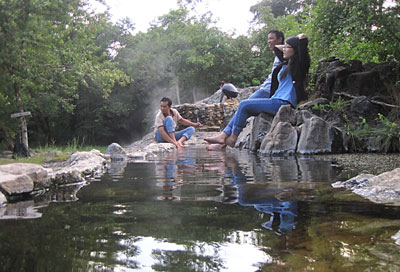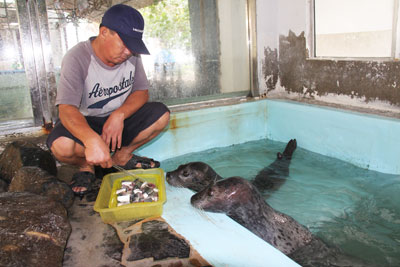
For several years, Nha Trang Institute of Oceanography has broken two sea-calves in, whose scientific name is Phoca Largha. The two sea-calves have been given special care to live healthily in the tropical climate of Vietnam...
For several years, Nha Trang Institute of Oceanography has broken two sea-calves in, whose scientific name is Phoca Largha. The two sea-calves have been given special care to live healthily in the tropical climate of Vietnam.
Visiting the sea-calves one day, we saw an engineer of the institute named Dang Tran Tu Tram preparing food for them. She said, “We go to the market to buy fresh fish for them every early morning. Normally, they can eat raw fish, but today they are tired so they eat filet only.”
 |
| Feeding sea-calves |
Reportedly, one of the sea-calves were taken to the institute from Thua Thien Hue in 2009, and the other came from Ninh Thuan in 2011. Both of them are female. Since 2009, the institute has invested a separate room for the sea-calves. The room has a swimming pool and a sand-bank. Especially, it is equipped with an air-conditioner to create a suitable environment for the sea-calves.
Chu Anh Khanh, an official of the institute, said, “In 10 recent years, Nha Trang Institute of Oceanography received some sea-calves but they died in a short time due to the unsuitable weather. They often died when the rainy weather lasted long. Then, we recognized that sea-calves cannot live in normal conditions in Khanh Hoa, especially in rainy season. Therefore, we have brought the two sea-calves into air-conditioned room with the temperature always kept from 15 – 18 oC.”
In addition, the room where the two sea-calves are living is cleaned twice a day to prevent pollution and smell, shared a worker named Vo Tuan Hung. Sometimes he bathes them by shower as a massage way. At present, the sea-calves are fed two meals a day on fixed time in the morning and the afternoon. The amount of food is about 5% as much as their weight. The food is mainly fresh fish or squids.
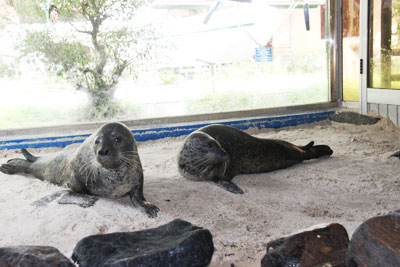 |
| Two sea-calves live in air-conditioned room with sand-bank and pool. |
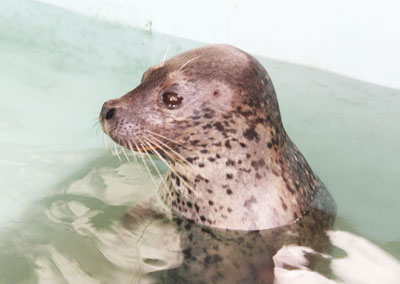 |
The two sea-calves are living well now. When we came, they were swimming or playing on the sand-bank healthily. Every time visitors came, they crept up and played loveable atcs. The sea-calves have made the destination more attractive to visitors, especially children.
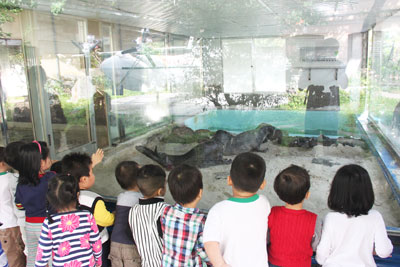 |
| Visitors, especially children, like to see the sea-calves very much. |
T.T

